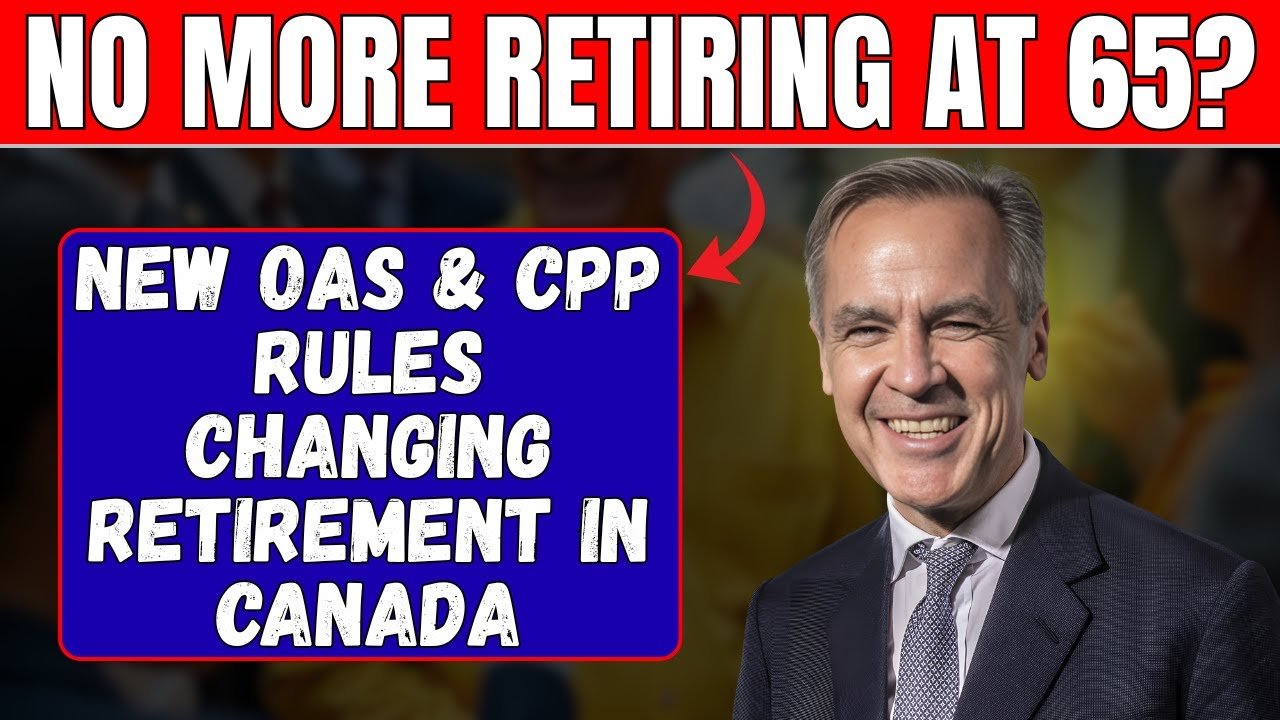Canada Ends Retirement: Canada has officially moved away from the long-standing concept of a fixed retirement age of 65. As of today, a new age-based retirement rule has been confirmed, changing how millions of Canadians will plan their financial futures. Canada Ends Retirement This shift marks one of the most significant updates to the country’s retirement and pension structure in decades.
While headlines may sound dramatic, the real change is more practical: Canada is transitioning from a mandatory or traditional retirement age to a flexible retirement system, giving Canadians more control over when they retire and how they access benefits like the Canada Pension Plan (CPP) and Old Age Security (OAS).
What Has Changed?
For decades, turning 65 symbolized “retirement age,” when workers would typically stop working and begin receiving government benefits. But with the new rules:
1. Retirement at 65 Is No Longer the Standard
The government has confirmed that retirement will no longer be tied strictly to age 65. Instead, Canadians can retire earlier or later, depending on financial needs, health, and career choices.
2. Greater Flexibility in Claiming CPP & OAS
-
CPP can still be taken as early as 60 or as late as 70,
but now incentives for delaying benefits beyond age 65 are stronger. -
OAS, traditionally available at 65, also now encourages later claiming with higher benefit payouts.
3. Benefit Adjustments Based on Claim Age
-
Claiming earlier may reduce monthly benefits.
-
Claiming later may increase monthly benefits significantly.
-
This gives individuals more freedom to plan retirement based on personal circumstances.
4. Focus on Longer Life Expectancy
Canadians are living longer, often into their late 80s or 90s. The new rule aims to ensure the pension system remains sustainable while giving workers the option to extend their careers.
Why the Change Was Needed
Several major reasons influenced the retirement-age update:
1. Aging Population
Canada’s senior population is growing faster than ever. More people are living longer, requiring pensions for more years.
2. Financial Sustainability
To prevent strain on CPP and OAS funds, a flexible system helps balance payouts and contributions.
3. Modern Work Culture
Today’s workforce includes:
-
Self-employed individuals
-
Freelancers
-
Professionals who want phased retirement
-
Seniors working part-time
A single “retirement age” no longer fits everyone.
4. Personal Choice & Fairness
Not everyone wants to retire at 65. Some prefer continuing work, while others with physically demanding jobs may need earlier retirement.
The new system respects these differences.
$2000 IRS stimulus check coming in November 2025? Here’s the truth
How the New System Works
CPP (Canada Pension Plan)
-
Take CPP at 60: Reduced payments
-
Take CPP at 65: Standard payments
-
Take CPP at 70: Highest payments
Delaying CPP increases monthly income for life.
OAS (Old Age Security)
-
Standard start age remains 65,
but delaying OAS now offers larger monthly payouts.
Working Past 65
People who continue working may keep contributing to pension plans, increasing their retirement income later.
Current Retirees
Those already receiving benefits will not lose their pension. The change mainly affects future retirees or those currently planning when to retire.
What This Means for Canadians
More Control
You can now decide:
-
When to retire
-
When to start benefits
-
How much income you want at different stages
Financial Planning Matters More
Since benefits differ depending on when you claim them, planning becomes essential.
Opportunities for Higher Income
Canadians willing and able to work longer can earn significantly more through higher payouts.
Benefits of the New Rule
-
Flexible retirement ages
-
Higher pensions for delaying benefits
-
Better support for longer lifespans
-
Pension sustainability
-
Personalized retirement choices
Challenges You Should Be Aware Of
-
Those unable to work past 60 or 65 may face smaller pensions
-
More complicated retirement decisions
-
Need for financial advice
-
Longer working years for some individuals
FAQs
1. Has Canada officially ended retirement at 65?
Yes, the government has replaced the traditional fixed retirement age with a flexible retirement system. You can now retire earlier or later depending on your situation.
2. Do I have to retire later now?
No. You can still retire at 60, 65, or 70 — the choice is yours, but payments change depending on when you start benefits.
3. Will my CPP still start at 65?
CPP can start at any age between 60 and 70. Starting at 65 gives you the standard benefit. Starting earlier reduces the amount; delaying increases it.
4. What about OAS?
OAS still begins at 65 for most people, but you now have the option to delay for higher payments.
5. Are current retirees affected?
No. Those already receiving CPP or OAS will continue to receive benefits normally.
6. Why did the government remove the age-65 rule?
To address longer life expectancy, workforce changes, and pension sustainability, while giving Canadians more flexibility.
7. Can I retire at 60 under the new rule?
Yes, you can retire at 60, but your monthly pension amount will be reduced compared to retiring at 65 or 70.
8. Is retirement mandatory at any age now?
No. Retirement is now fully flexible — no mandatory age.





